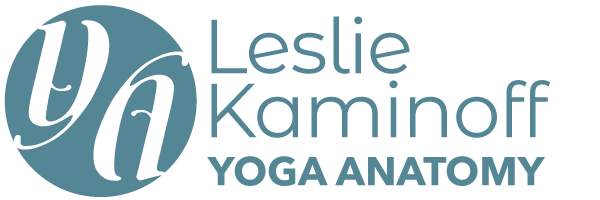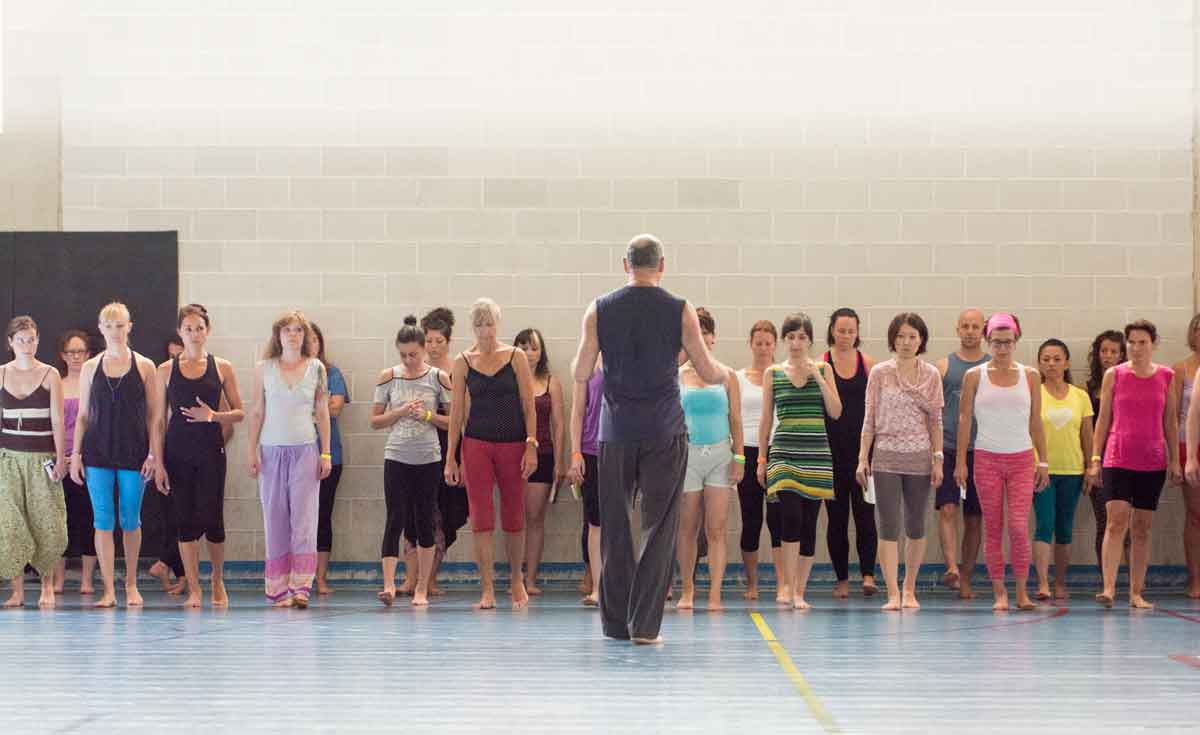Reflections on the inaugural class of Leslie Kaminoff’s “Yoga Anatomy – Practices” at The Breathing Project, NYC. October 5, 2011
by Edya Kalev
In a sold-out asana class full of professional yoga teachers, one might expect that the practice would include splits, scorpions and other poses deemed impossible by the vast majority of lay practitioners. Not so in the first day of Leslie Kaminoff’s brand-new Yoga Anatomy: Practices course at The Breathing Project.
Standing, breathing, and concentrating awareness; these were the surprisingly complex challenges given to the class. Starting out, we sensed the movement of the breath with hands on belly and abdomen. Then we focused on the top hand as we inhaled, and the bottom as we exhaled. Taking that into movement, we floated into a forward bend from a lunge position. Maddeningly, Leslie provided no specific instruction as to how to breathe, just where to focus the attention as we moved.
After settling into a comfortable pattern of movement, focus and breath, Leslie of course swapped the area of focus. Now we were to shift attention to the belly region on the inhale and the chest region on the exhale. Many experienced momentary confusion as we arched into cow and rounded our spine into cat…why did this familiar movement feel so different? Could changing the focus of our breathing really change everything?
At the end of our brain-scrambling sequence, just when we were looking forward to a predictable winding down, Leslie proposed “freestyle counterposing,” encouraging students to figure out what they needed to feel complete in the practice and do it on their own. Yet another diversion from the expected, honoring the unique individual over the “routine.”
During the last 5 minutes, the class meditated on a figure of overlapping triangles with a center point. Leslie asked us to sit with our “associations, insights, and connections between the visual image and the practice,” just as he had to 25 years ago in the presence of his teacher, the great TKV Desikachar. He then shared with us his private journal and drawings from that lesson, showing how broke the symbol apart into two separate triangles and reconstructed it again.
Back in that room, Leslie found meaning in the separate parts of the symbol before making it whole again, as one would examine the two distinct parts of the breath, then flow with the full breath. An apt parallel to both what his teacher incited in him, and what he has begun to stir in us. With Desikachar’s lesson in mind, Leslie had created an Advanced Practice without advanced poses, for yoga teacher and yoga student alike.


 Created specifically for one-on-one yoga and movement education. There's no risk since the first month is free, and you can cancel at any time!
Created specifically for one-on-one yoga and movement education. There's no risk since the first month is free, and you can cancel at any time!
Comments (4)
Please can someone tell me if my belly is above or below my abdomen?
The two terms refer to regions, not structures, and are more or less interchangeable.
Sorry I didn’t make myself clear; the question arose out of the article. “with hands on belly and abdomen we concentrated” which implied the hands were in different places … And one was above the other.
If that’s the case, I misspoke. The hands were, I believe, placed on chest and abdomen for the exploration.
Comments are closed.